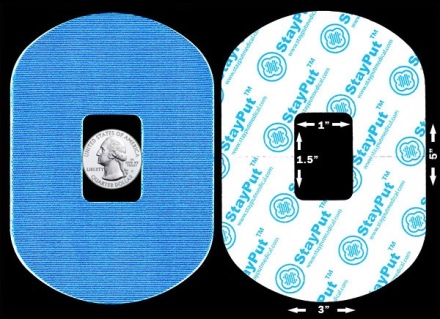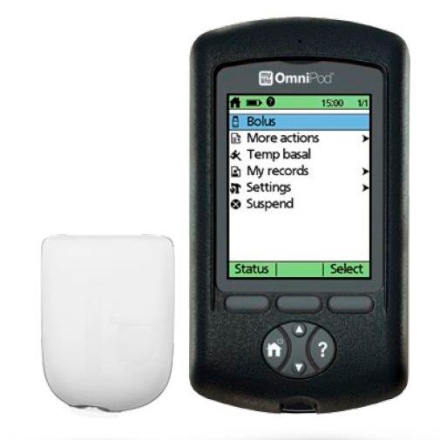 Today I celebrate 35 years of having Type 1 Diabetes. I think, that is. I don’t know what the date was but my mom said it was the week after Thanksgiving 1983, so I picked today as the day to remember when everything changed. I have a yearly reminder in my phone called “Death of my pancreas” to make me laugh. Lol!
Today I celebrate 35 years of having Type 1 Diabetes. I think, that is. I don’t know what the date was but my mom said it was the week after Thanksgiving 1983, so I picked today as the day to remember when everything changed. I have a yearly reminder in my phone called “Death of my pancreas” to make me laugh. Lol!
I don’t really have a lot of memories before I was diagnosed. I guess it’s because that was the one defining thing that changed the way I live. I remember going to my pediatrician, Dr. Hinkebein, (the dad; his son is in his practice now) and I remember my mom crying when he told her. I didn’t understand at all but it scared me that she was crying, so I started crying too. I think remember going home, packing a bag, and then going to Kosair Children’s Hospital. It was in the evening, already dark. I also remember him saying “They will find a cure for this in her lifetime”. I’m still waiting…
From there everything was a blur but I think I was in the hospital for 2 weeks. Nowadays, I don’t think you’re admitted to the hospital unless you are in DKA. I learned how to give myself shots, practicing first in an orange. I checked my urine for keytones with urine strips. Glucometers weren’t out for home use st that point, only in hospitals and doctor’s offices.
I remember the nurses coming to check my blood sugar. They used these lancets that I called “swords”. They were awful and made my fingers hurt SO much! I was like “Please, PLEASE, not the SWORDS”. My fingertips looked so beaten and bruised!
I’m not sure when we got a glucometer to use at home. But the lancet device was less archaic than the “sword”. Not anything like it is today but at least I didn’t feel like I was cutting my fingers off with it. I found pictures on Instagram of the “swords” and the first lancet device I had. Oh, the memories!

The “swords”
 The first “lancing device” I ever had.
The first “lancing device” I ever had.
I had a lot of trouble when I was in middle and high school with erratic blood sugar and spent a lot of time in the hospital getting me regulated. Thankfully, I haven’t been in the hospital, specifically, because of my diabetes since I was in high school, a long, long, long time ago!
Technology now is so much better than back in the “old” days. Now I have an Omnipod insulin pump and a Dexcom Continuous Glucose Monitor. I remember it feeling like such an out of body experience when I had low blood sugar. I would feel shaky all over and everything felt so slow. Now, I’m not able to feel when I’m getting low so I rely so much on my Dexcom CGM!
Dexcom checks my sensor glucose every 5 minutes and is about a 20 minute lag behind real time. I gotta be honest, the first time I saw the applicator, I kind of freaked. If you look closely, you can see a long ass needle inside the inserter. (About mid-way down the clear tube – I’ll mark it in the pic below.)
That’s a hard mental image to get over when you have to insert that thing into your body. So once you insert the applicator, you attach the transmitter. The transmitter “talks” to the receiver, which in my case is my iPhone. There’s a 2 hour warm up period where you get no readings and then you calibrate it twice to get going. From there, readings update every 5 minutes unless there’s a problem (like if the phone is too far away from you, etc). You’re “supposed” to change out the sensor after 7 days. My endo nurse practitioner said to go 14 day. Other people go longer than 14 days. I’m in that category, where I only change it when I absolutely have to (I mean, have you SEEN that needle?!) so I get about 3-4 weeks out of one sensor. Those suckers are expensive! A three month supply of sensors runs $1,700, and transmitters are $910 for 2 (1 transmitter will last about 3 months).
 Side view of the sensor:
Side view of the sensor:

The transmitter isn’t very mig, maybe 1-1/2″. The issue is that the adhesive doesn’t always last on the Dexcom so I’ve found Stay Put Patches that are really good. Sometimes they stick too well so i have to use Unisolve to get them off! Once the 2 hour warm up is up, I start getting the readings on my phone and Apple Watch – technology is SO cool! It will sound alerts when I get to my low (<100), high (>170), or urgent low (<50) levels. So if it says I’m at 100, reality is that I’m probably lower than that because of the lag in real time.
 Stay Put Patches are the BEST I’ve found! Even after 4 weeks, I don’t get lifting around the edges of the patch. The longer I can keep the Dexcom sensor on, the fewer times I have to think about that needle going it!!
Stay Put Patches are the BEST I’ve found! Even after 4 weeks, I don’t get lifting around the edges of the patch. The longer I can keep the Dexcom sensor on, the fewer times I have to think about that needle going it!!
My Omnipod insulin pump delivers a set amount of insulin every hour (this is the basal rate) and I “tell” it how many carbs I’m eating and it calculates and delivers the correct amount of insulin to cover the food I’m eating. I can adjust the basal rates as needed and I’m finding that season changes tend to make me fluctuate. I’ve now got a “Summer” and “Fall” basal rate. Probably will add a “Winter” and “Spring” but I just realized that season changes make me run higher or lower. Weird!
It’s a little bigger than Dexcom, and thicker. A 3 month supply is $1,225. I open the packaging and inject enough fast acting insulin (either Novolog or Humalog, they’re basically the same thing) into the reservoir to cover 3 days. For me, that’s about 85 units, which is the least amount you can put In Omnipod. Unlike Dexcom, there’s a hard stop after 3 days with Omnipod. If you get to that limit, it will start to sing the song of its people. Which is a super shrill, incredibly annoying, alarm. Seriously, they need to make an alarm clock with that sound and it would wake anyone!
It’s controlled with a PDM, which is basically the pod’s “command center”. You enter your current blood sugar, the number of carbs you’re eating and BAM, it does all the calculations to tell you how much insulin you will need.
Omnipod allows me to set a temporary basal which will deliver an increased or decreased amount of my regular insulin over an amount of time I choose (like ⬆️ 20% over 1 hour). That way if I’m eating a carb-heavy meal, or if I’m running low, I can adjust my insulin to handle that.


 The cannula is the little blue thing at the top of the bottom side of the pod. That’s what goes under my skin to deliver the insulin. I barely feel the cannula being inserted when it’s time to switch out sites.
The cannula is the little blue thing at the top of the bottom side of the pod. That’s what goes under my skin to deliver the insulin. I barely feel the cannula being inserted when it’s time to switch out sites.
This technology has been life saving, truly. I can no longer tell when blood sugar is low until it’s very low (<30) and I can’t always feel it at all, so I can’t rely on how I feel to measure reality. One thing that really helps me is eating low carb meals. I still eat carbs, but I limit which meals I have them. If I eat a bunch of carbs at dinner, it takes longer to digest them, so I end up running higher overnight than if I don’t eat them.
Sometimes, though, mama just wants some carbs! Happy carb counting!
xo,
Jennifer
T1D 35 freaking years
Thank you for sharing! It was interesting to read how the device works. Treatment has come a long way since I became a nurse.
I do hope you live long enough for a cure!
Love, Natalie
>
LikeLike
I do remember very, very clearly, one day you came in from elementary school, dropped your books on the floor and nearly ran to the house to the kitchen, putting your head under the faucet and drinking water for a very long time. He fell asleep on the floor watching television before dinner. You got up in the night several times to use the bathroom. This pattern continued for a couple of days and it dawned on me that you had the same symptoms that my dad had when he was diagnosed with Type 2 diabetes a couple years previously.
I called Dr. Hinkebine’s office for an appointment and told him “I think she has diabetes“. It quick blood test later confirmed that fact and our life is forever changed.
He spent a week in the hospital learning about this disease, how to give an injection, and how to manage your blood sugar through times of health and sickness. After your discharge from the hospital I think we spend another few days at home before you went back to school. We talk to each of your teachers so they would recognize the symptoms of low blood sugar and allow you to have a snack if needed during the day.
The coming years were full of hospitalizations, some with malfunctioning equipment, wrong type insulin given, and attentive nurses, and a lot of “mama bear” behavior from me!
Eventually though, he began to manage all of this on your own and have continued to do so very well. The Omni pod and Dexcom have revolutionized Treatment of diabetes. We are still looking for a cure!
I did read about a new study from the Faustman Lab at Massachusetts General Hospital suggests that a nearly 100 year old tuberculosis vaccine called BCG may hold cure-like promise for people with Type 1 diabetes. Fingers crossed!
Diabetes is an enormous money maker for medical equipment and pharmaceutical companies. I imagine that profit margins have a great impact on the “cure” being developed.
I’m still praying for a cure in your lifetime!!
LikeLike
Hi, I’m now getting your blog update by your time line just by following. Should have done this before. It’s a great short cut. Happy 35!💞 Love your historic back story on the sword. Great fact.
LikeLiked by 1 person
you are the strongest woman I know!
LikeLiked by 1 person
😘😘
LikeLike